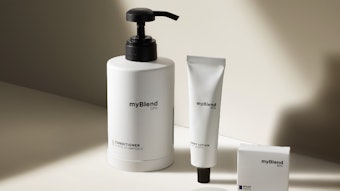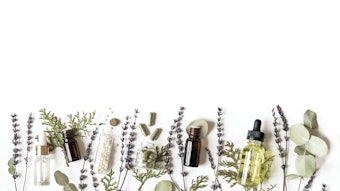
In the consumer’s world, natural means safer, greener, better for the environment, etc. And although this belief may not entirely be grounded in reality, the fact remains that products labeled as natural have been the force behind a major trend in cosmetics and personal care for years.
According to Ibarra and Johnson,1 the consumer’s perception that natural materials are better tolerated than non-naturally occurring ones in cosmetic applications follows a simple philosophy: the human organism is the product of an evolutionary process lasting millions of years, and human metabolism has adapted to the surrounding chemical environment. As a consequence, consumers conclude that the human body is far more adapted to cope with naturally occurring compounds than with synthetic ones.
A recent piece featured in the FoodNavigator reported that according to Mintel's Global New Products Database, the claim all natural ranked third among the most frequent claims made on food products launched in the in 2007, appearing on 2,617 products. In addition, in
Europe, 878 all natural food products were launched last year.
With such growing numbers in the natural arena, there are still no regulations that govern the use of the word natural. There also are no standardized industry guidelines, although some European member states such as in the UK do provide guidelines for use of the term.
According to the FoodNavigator, the U.S. Food and Drug Administration (FDA) recently received two petitions to define the term, one from the Sugar Association and another from manufacturer Sara Lee, but stated that it will not be considering the issue in the near future. In addition, the FDA reportedly told the e-publication that it is unsure of how prominent the issue is with consumers and the only way to push the issue onto its radar screen is if the agency was provided with research showing that people have overwhelmingly been misled.
The Sugar Association stated in a press announcement that it is disappointed with the FDA’s statement to FoodNavigator that the agency has no immediate plans to define the term natural.
“There are several things in this article that are of concern to us regarding their decision not to define natural at this time,” stated Andy Briscoe, Sugar Association president and CEO, in a press announcement. “First is the claim that it is not a consumer issue; second is the fact the agency says consumer research is needed before it can make a ruling; and finally is the agency’s contradictory stance on the issue of natural over the years.”
According to the Sugar Association, the current market trend strongly indicates that natural and organic products are the fastest growing categories in food manufacturing. The Sugar Association also contends that it is unrealistic to rely on consumer knowledge of food technology to evaluate whether or not they are being misled.
“We hope that FDA will reconsider defining the term natural as a priority,” added Briscoe, in a press statement. “This is the appropriate time to clearly define natural and protect consumers from misleading claims. After all, the FDA has established regulatory guidelines for the term healthy, why can’t the same be done for natural?”
Sara Lee commented on its Web site that “for years, various companies, groups and associations have called for the FDA to offer an official definition and guidelines for the use of the term natural on product packaging but to date, these efforts have gone unanswered.
“[The] FDA’s inaction on defining natural has confounded many in the food industry,” reports author Keith Seiz, on the Sara Lee Web site. “This parallels the organic industry, which for years begged for official guidelines to bring credibility to the claim.”
The pressure is on from the foods industry for the FDA to define natural and regulate it in some manner; however, would defining the term and setting rules for the self-regulated cosmetics and personal care industry complicate matters? What might those natural rules look like?
In Germany, the Association of German Industries and Trading Firms for pharmaceuticals, health care products, food supplements and personal hygiene products (BDIH) has established such guidelines.
According to the BDIH Web site, to certify a material by BDIH’s standards, during the collection and production of raw materials, nature is to be disturbed as little as possible. Particular care to protect endangered species is mandated. Genetic manipulation and modification are rejected and the transformation of raw materials into cosmetics is to be accomplished with care and with few chemical processes. Renewable and biodegradable materials are preferred.
BDIH states that the following guidelines define the concept of natural cosmetics with the consumer's expectations of safe and ecologically sound products in mind:
1. Raw materials obtained from plants
As much as possible, raw materials obtained from plants should be used from:
- controlled biological cultivation, taking quality and availability into account, or
- controlled biological wild collections
2. Animal protection
- No animal testing may be performed or commissioned when end products are manufactured, developed or tested.
- Raw materials that were not available on the market before Jan. 1, 1998, may only be used if they have not been tested on animals. This does not include animal testing performed by third parties who neither were ordered/prompted by the ordering party to do so nor are associated to the ordering party by company law or by contract.
- It is prohibited to use raw materials obtained from dead vertebrates (e.g.. spermaceti, terrapin oil, mink oil, marmot fat, animal fats, animal collagen or living cells).
3. Raw materials obtained from minerals
The use of inorganic salts and raw materials obtained from minerals is generally permitted, except for those listed in point 5 (see below).
4. Raw materials with restricted use
For the production of natural cosmetics, it is permissible to use components which are extracted through hydrolysis, hydrogenation, esterification, transesterification or other crackings and condensations from the following natural materials:
- fats, oils and waxes
- lecithins
- lanolin
- monosaccharides, oligosaccharides and polysaccharides
- proteins and lipoproteins
The actual raw material use is regulated by the positive list for development and production of certified natural cosmetics.
5. Deliberate rejection of:
- organic-synthetic dyes
- synthetic fragrances
- ethoxylated raw materials
- silicones
- paraffin and other petroleum products
The criterion which determines which aromatic substances are permitted is mainly ISO 9235.
6. Preservation
To ensure that products are microbiologically safe, certain nature-identical preservatives are allowed in addition to natural preservatives. These are:
- benzoic acid, its salts and ethyl ester
- salicylic acid and its salts
- sorbic acid and its salts
- benzyl alcohol
When these preservatives are used, products must be labeled “preserved with ... [name of preservative].”
7. No radioactive radiation
It is forbidden to disinfect organic raw materials and completed cosmetic products using radioactive radiation.
8. Certified Natural Cosmetics
A neutral control body checks that the above criteria are met. The association's label is used to indicate that the criteria have in fact been met.
Are the standards described by BDIH something the personal care industry could build on to create international standards? Does the industry want to? It should in the sense that this would outline what can be labeled as natural and thus clarify the facts behind a label claim to consumers.
Now, if the consumer only understood the reality that natural doesn’t equal safer…
-Rachel Chapman References From CosmeticsandToiletries.com
Senior Editor, Cosmetics & Toiletries magazine
1. F. Ibarra, PhD, and C.H. Johnson, Natural Preservation from Concepts in Nature, Cosm & Toil 123 3 (Mar 2008) in press










